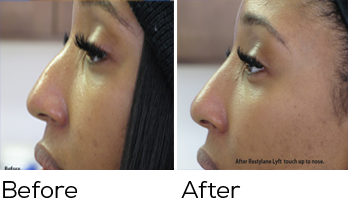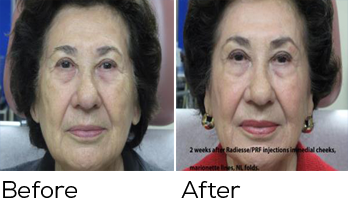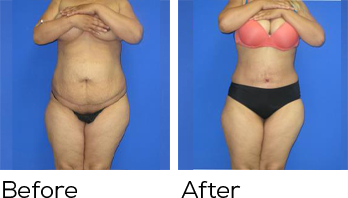A tummy tuck, or “abdominoplasty,” is one of the most commonly requested cosmetic surgery procedures today. After all, who would say no to a slimmer, flatter stomach? Tummy tucks help streamline the shape and do wonders for self-esteem. Dr. Quita Lopez a Cosmetic Surgeon in Fresno, CA who specializes in the Tummy Tuck procedure says there are special considerations to take when considering the surgery, it’s important to note that there are options. Not as many people are aware of a procedure known as the “mini tummy tuck,” which is a viable alternative for patients requiring a less significant adjustment. There is also a new technique known as the tubeless tuck. This technique is applied to his abdominoplasty surgery (tummy tuck), mini-abdominoplasty surgery (mini tummy tuck), breast reductions, breast lifts (mastopexy), facelifts, as well as neck lifts. Learn more about the two procedures, and how they are differentiated from one another, below.
Full Tummy Tuck
A full procedure is what most people are referring to when they speak of a “tummy tuck“. In a full abdominoplasty, the surgeon will be addressing all three components of the abdomen: fat, muscle, and skin. The stomach is one of the most common bodily locations for excess fat to be deposited; by removing this extra fat tissue, a tummy tuck both improves the patient’s appearance and mitigates the health risks caused by this abdominal fat (these risks notably include heart disease and diabetes). In addition, the cosmetic surgeon will repair and tighten your abdominal muscles, which over time may have become become stretched out, causing an outward bulge, or “pooch.”
After fat removal surgery or liposuction, or even weight loss by another method, the patient may be left with unsightly sagging skin, which is why in an abdominoplasty, the surgeon prevents this by removing the skin between the belly button and the surgical incision. At the end of the surgery, the skin is stretched down from the belly button and stitched back together, creating a tighter, smoother look. This also improves or eliminates pre-existing stretch marks.
One of the signatures of the full tummy tuck is the scar left behind, which typically extends from hip to hip and is located somewhere near the panty line. Patients should plan on full bed rest for about a week, and suspension of moderate-to-strenuous activities for about six weeks.
Mini Tummy Tuck
If a patient doesn’t need a complete abdominal overhaul, a mini abdominoplasty is an excellent “in between” option. Its main function is to eliminate that “stomach pooch” discussed above (the result of stretched or separated muscles), though it can be combined with liposuction to remove fat if desired. Unlike the full procedure, a mini tummy tuck does not remove much skin, so it achieves less drastic results andB has a negligible impact on stretch marks. It also has a more limited range of muscle tightening (a full tuck can tighten above and below the belly button; the mini only tightens below).
The tradeoff is that a mini tummy tuck leaves behind a much less noticeable scar, making it a good choice for patients who want a flatter stomach but don’t have too much excess fat or skin.
Recovery time for mini tummy tucks will vary based on the patient, but most doctors estimate around 10-14 days for the initial recovery, and limitations of physical activity in the following weeks.
As with all medical procedures, cosmetic or otherwise, make sure to schedule an individual consultation with a trained medical professional before deciding which option is right for you.



